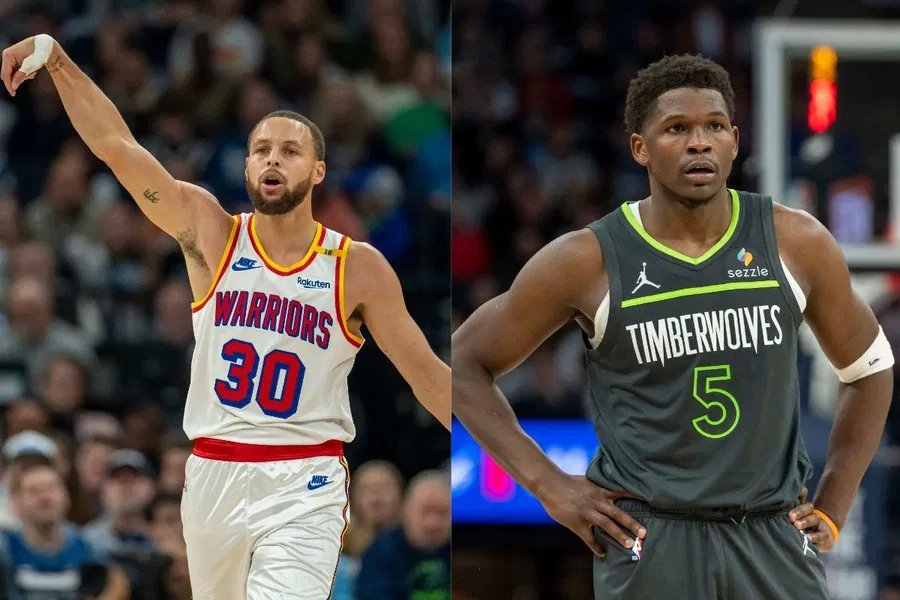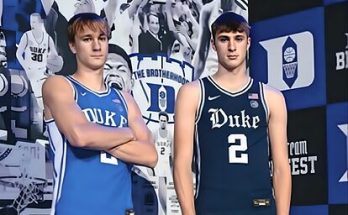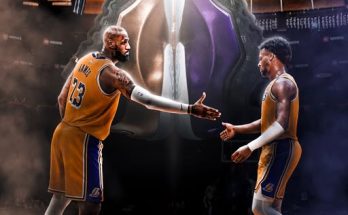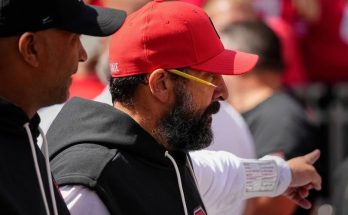The Minnesota Timberwolves have long been a team brimming with potential, yet they’ve struggled to convert that promise into consistent success. At the heart of their current aspirations lies Anthony Edwards, the 22-year-old rising star whose explosive talent and relentless work ethic have already earned him comparisons to some of the NBA’s greats. Recently, Edwards appeared poised to spearhead a significant transformation within the Timberwolves, drawing inspiration from the Golden State Warriors’ revolutionary playing style. However, a fitness-related concern has reportedly stalled this ambitious plan, raising questions about the team’s trajectory and Edwards’ role as its cornerstone.
A Vision for Change Inspired by the Warriors
The Warriors, under Stephen Curry’s leadership, have redefined modern basketball. Their emphasis on pace, spacing, and three-point shooting has not only led to multiple championships but also influenced the strategic direction of teams across the league. Edwards, a self-proclaimed admirer of Curry, reportedly envisioned adopting a similar blueprint for the Timberwolves. His goal: to elevate Minnesota into a team that could stretch the floor, create mismatches, and dominate opponents with precision and flair.
This vision seemed particularly feasible given Edwards’ unique skill set. A dynamic scorer with the ability to attack the rim, shoot from beyond the arc, and create opportunities for teammates, Edwards is the type of player who can thrive in a fast-paced, perimeter-oriented system. Pairing his talents with the likes of Karl-Anthony Towns, one of the NBA’s most versatile big men, and Rudy Gobert, a defensive anchor, appeared to be a formula for success. Yet, the road to implementing this style has hit a significant roadblock.
The Fitness Hazard
Reports suggest that Edwards has been dealing with a fitness-related issue that could impede his ability to play at the high-intensity level required for such a transformation. While the specifics of the hazard remain undisclosed, sources within the organization indicate that it pertains to endurance and recovery—two critical components for thriving in a system modeled after the Warriors.
The Warriors’ style demands relentless movement, both on and off the ball. Curry and his teammates are renowned for their ability to run defenders ragged with constant screens, cuts, and relocations. To replicate this in Minnesota, Edwards would need to sustain peak physical performance for extended stretches of games. The fitness concern has understandably raised red flags, prompting the team to prioritize Edwards’ health and long-term sustainability over immediate strategic shifts.
Balancing Ambition and Realism
The Timberwolves now find themselves at a crossroads. On one hand, the prospect of emulating the Warriors’ success is undeniably appealing. On the other, the team must consider the risks associated with pushing Edwards too hard, too fast. This balancing act highlights the broader challenges faced by NBA organizations when building around young superstars.
Edwards’ commitment to his craft is well-documented. Over the offseason, he reportedly dedicated countless hours to improving his shooting mechanics and conditioning, hoping to expand his offensive arsenal and shoulder a heavier workload. However, even the most driven athletes can face limitations imposed by their bodies. The Timberwolves’ medical staff is likely working closely with Edwards to address these issues, but their cautious approach underscores the importance of prioritizing player health in the modern NBA.
Lessons from the Warriors’ Journey
Interestingly, the Warriors themselves have faced similar dilemmas in their rise to dominance. Curry, now synonymous with durability and excellence, struggled with ankle injuries early in his career. The Warriors’ decision to invest in Curry’s long-term health, rather than rushing him back onto the court, proved to be a masterstroke. It’s a blueprint that the Timberwolves would be wise to follow with Edwards.
Moreover, the Warriors’ success wasn’t solely a product of Curry’s brilliance. The team’s system was meticulously crafted to maximize the strengths of all its players, from Klay Thompson’s sharpshooting to Draymond Green’s defensive versatility. Minnesota’s front office and coaching staff must similarly identify complementary roles for their roster, ensuring that the burden of transformation doesn’t fall squarely on Edwards’ shoulders.
The Role of Karl-Anthony Towns and Rudy Gobert
In this context, the contributions of Towns and Gobert become even more critical. Towns’ ability to stretch the floor as a three-point shooter provides a unique advantage, while Gobert’s presence in the paint can create opportunities for Edwards to attack off the dribble. However, integrating these pieces into a cohesive unit requires careful planning and execution.
The Timberwolves must also address questions about roster depth and spacing. Unlike the Warriors, who have consistently surrounded Curry with elite shooters, Minnesota’s supporting cast lacks the same level of marksmanship. Players like Jaden McDaniels and Mike Conley will need to step up as reliable perimeter threats to make the system work.
Looking Ahead: What’s Next for Edwards and the Timberwolves?
While the fitness concern has temporarily halted Edwards’ ambitious plans, it’s far from a definitive setback. If anything, it’s a reminder that progress in the NBA is rarely linear. The Timberwolves still have a golden opportunity to build around Edwards’ immense potential, provided they approach the process with patience and foresight.
For Edwards, the immediate focus will likely shift to managing his fitness and finding ways to contribute within the team’s existing framework. His ability to adapt and grow as a leader will be crucial in determining how far the Timberwolves can go this season. Meanwhile, the front office must continue to explore avenues for improving the roster, whether through trades, draft picks, or player development.
The Warriors’ journey from a middling franchise to a dynasty offers a powerful example of what’s possible with the right mix of talent, strategy, and perseverance. Edwards and the Timberwolves may not be there yet, but with time and careful planning, they could very well carve out their own path to greatness.
Conclusion
Anthony Edwards’ dream of transforming the Timberwolves into a Warriors-esque powerhouse has hit an early snag, but it’s far from over. The fitness hazard that has temporarily derailed this vision serves as a valuable lesson in the importance of balancing ambition with realism. By prioritizing Edwards’ health and working collaboratively to build a sustainable system, Minnesota can still aspire to achieve greatness.
The road ahead will undoubtedly be challenging, but with Edwards at the helm, the Timberwolves have every reason to believe in their potential. After all, even the Warriors started somewhere—and with the right approach, Minnesota’s journey could be just as remarkable.



